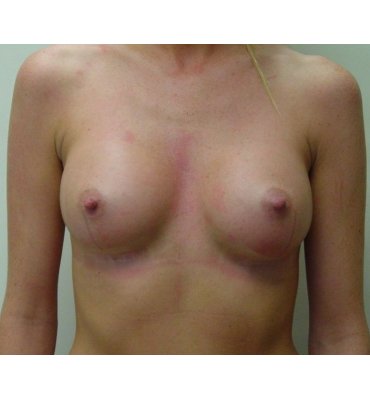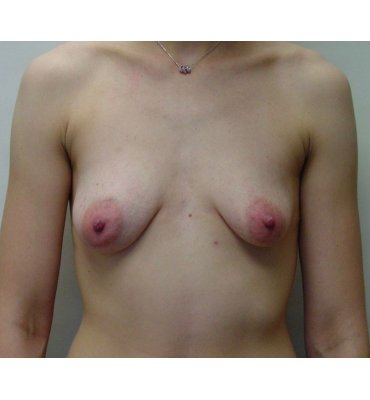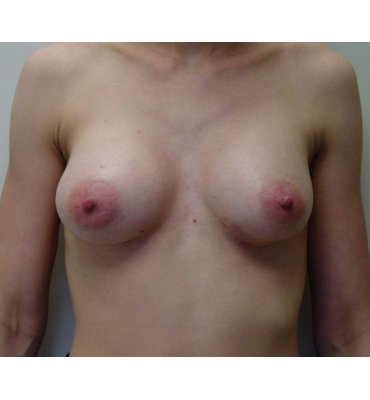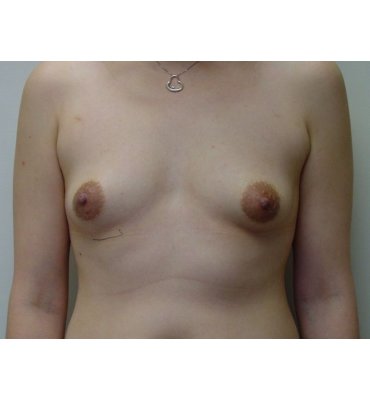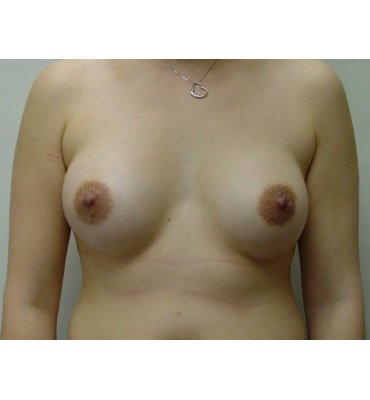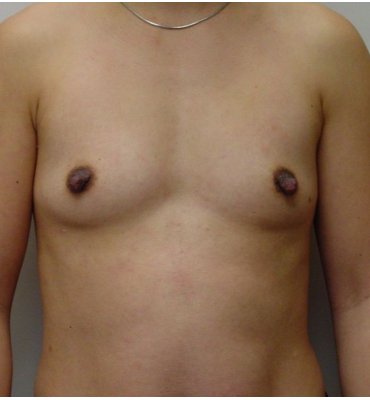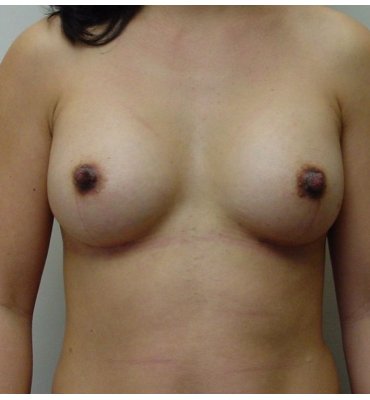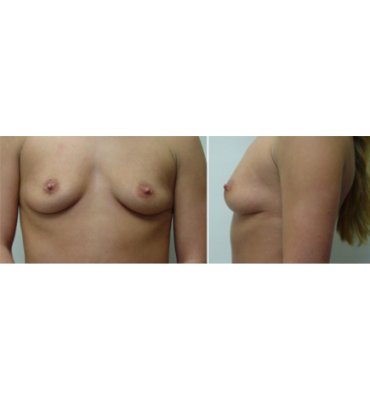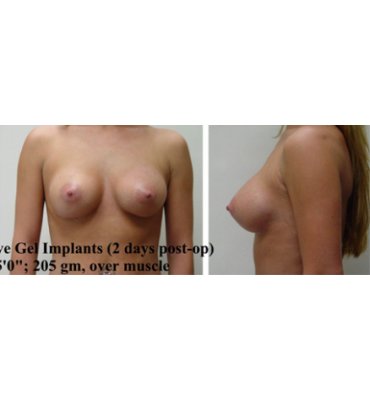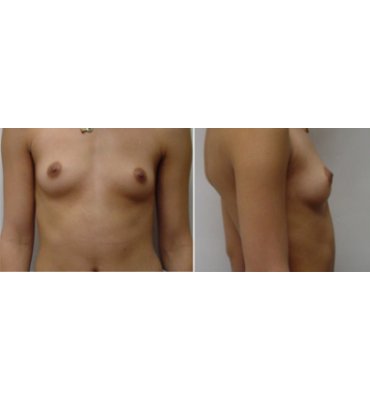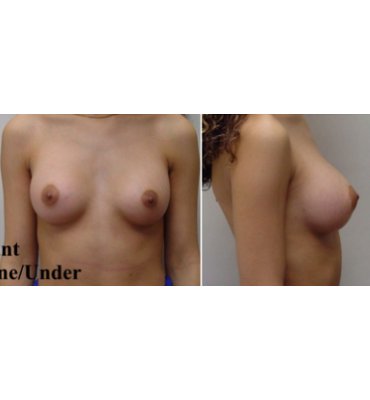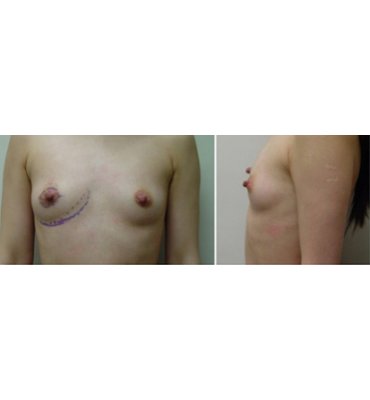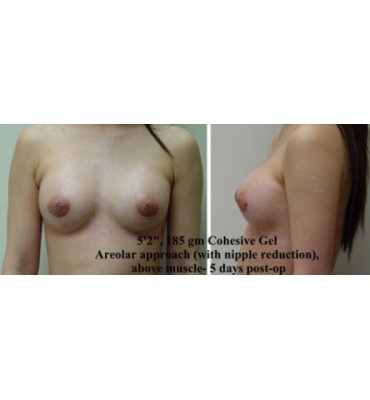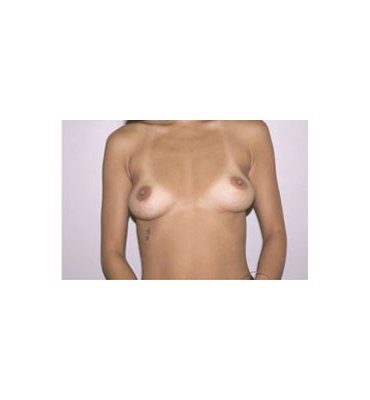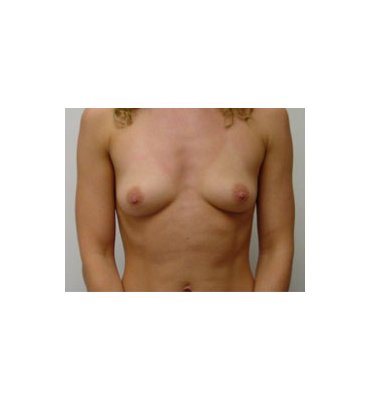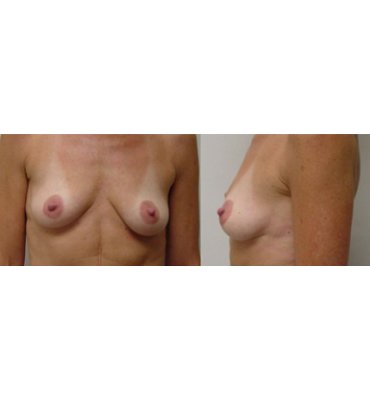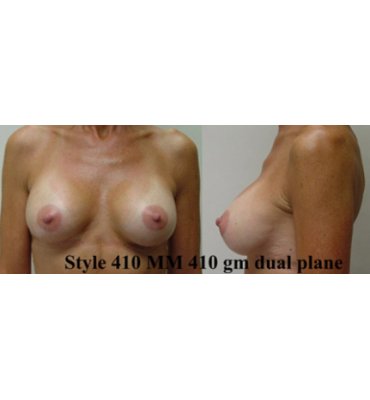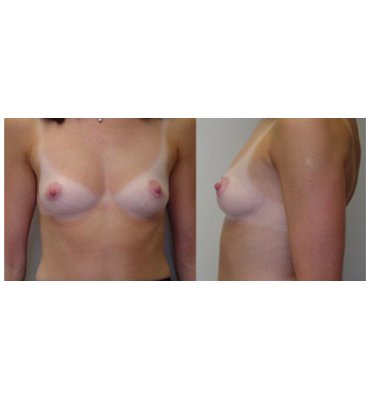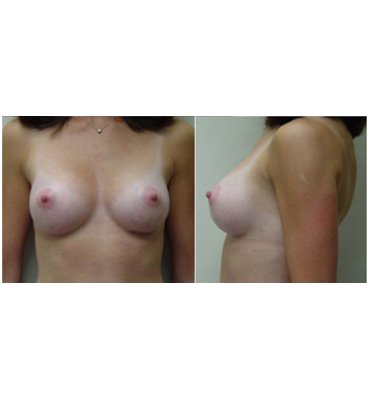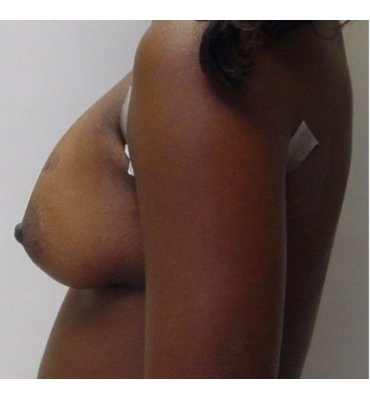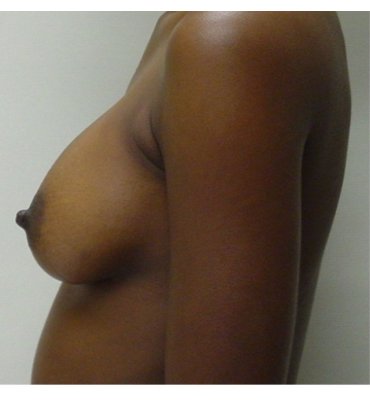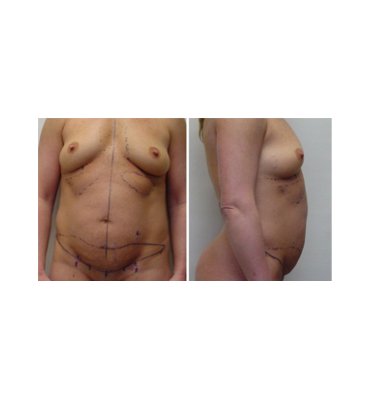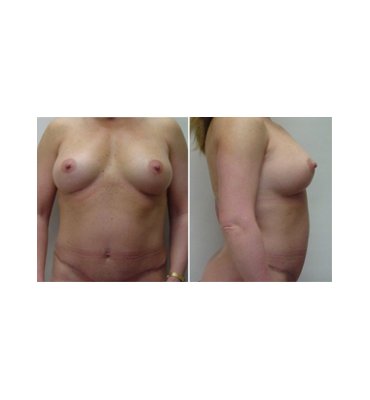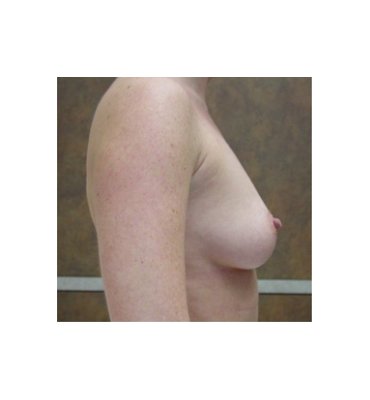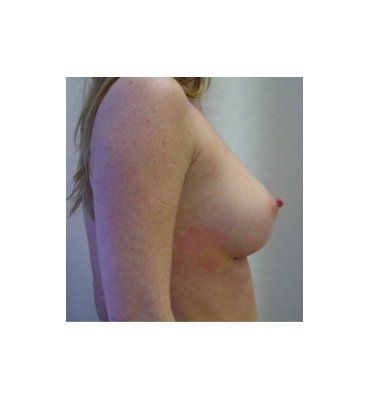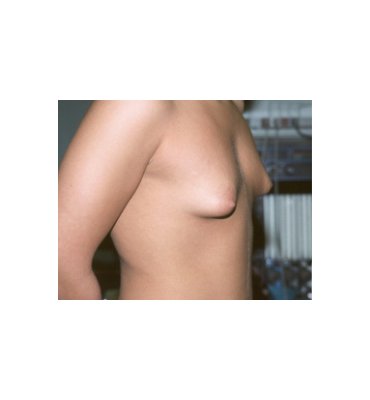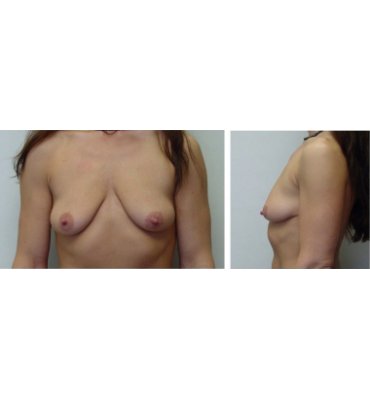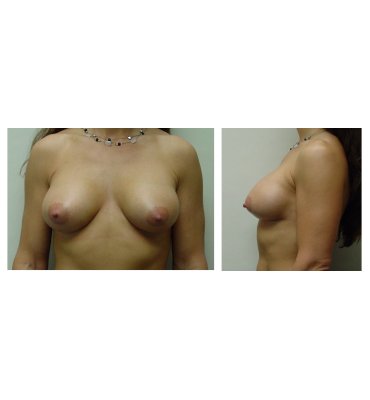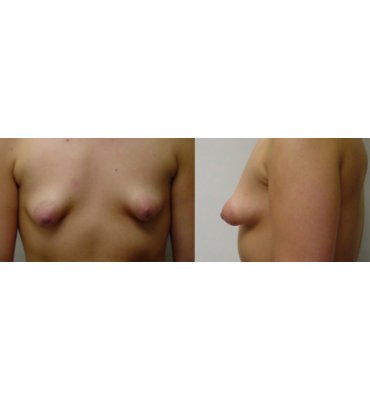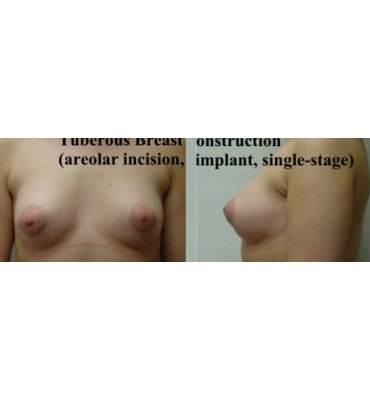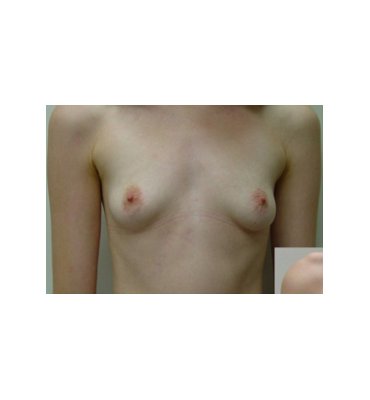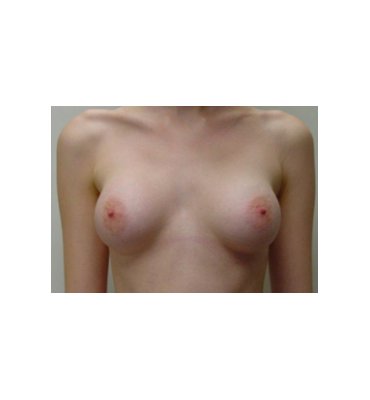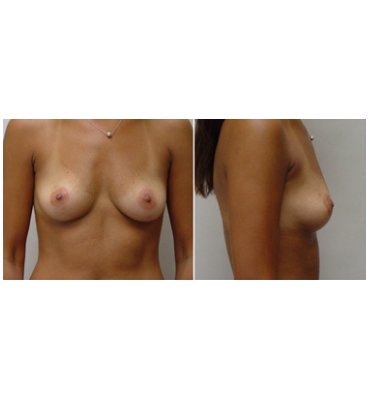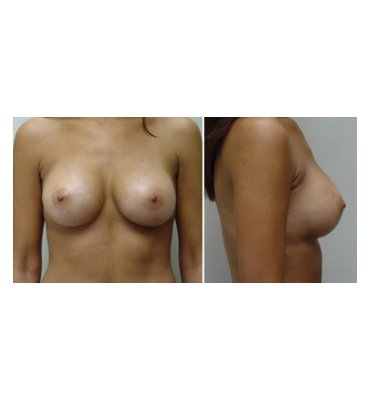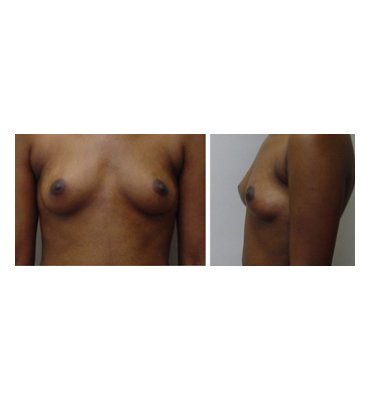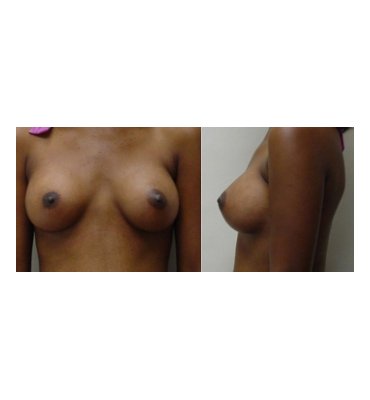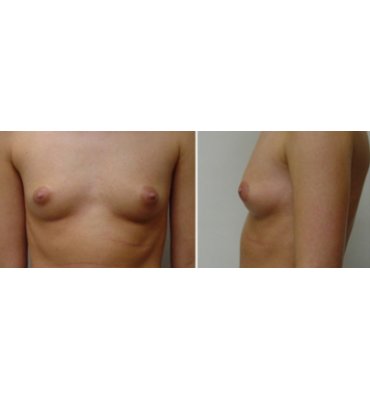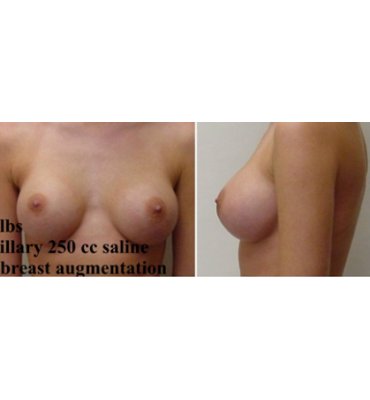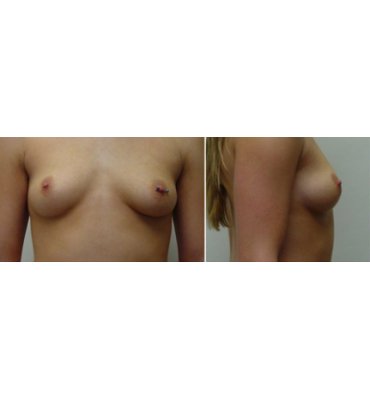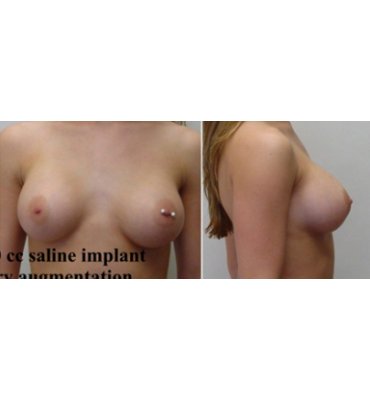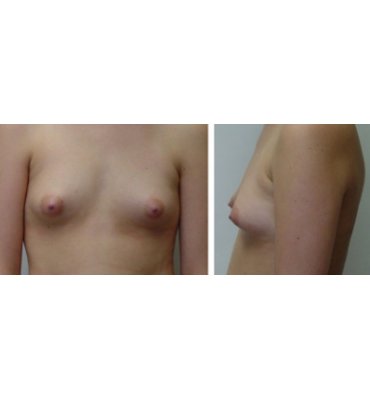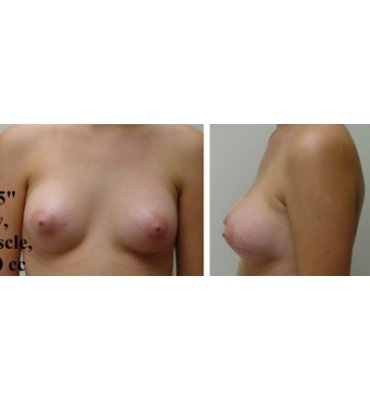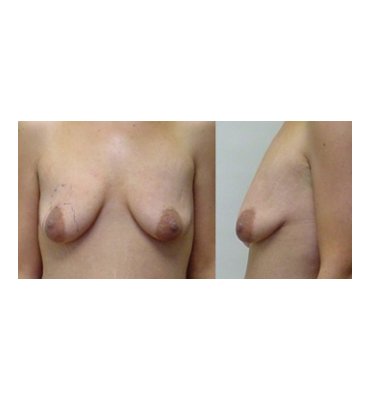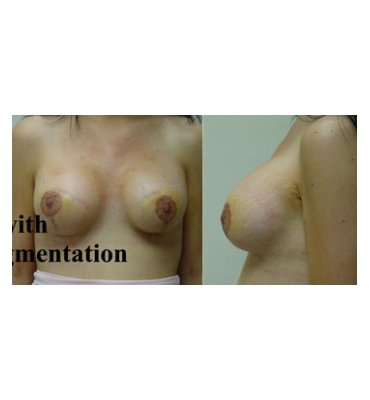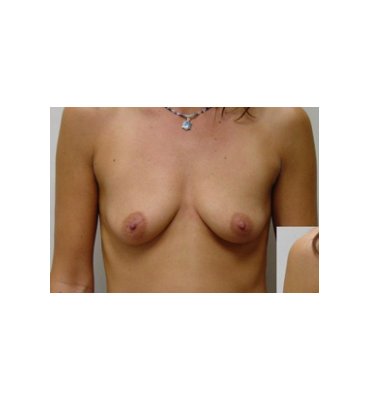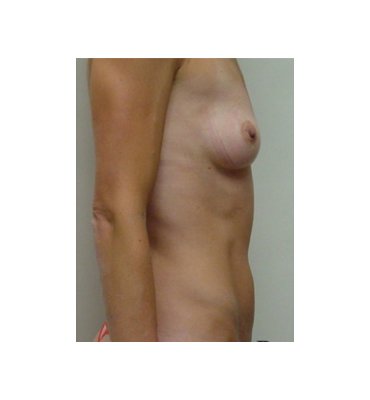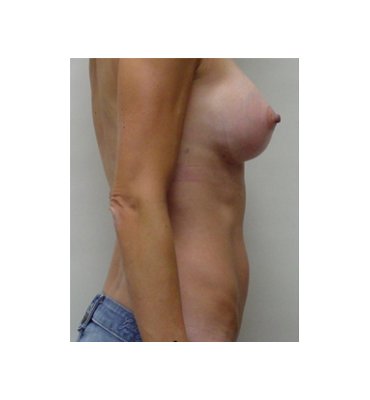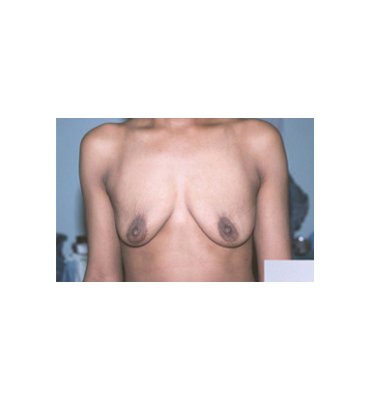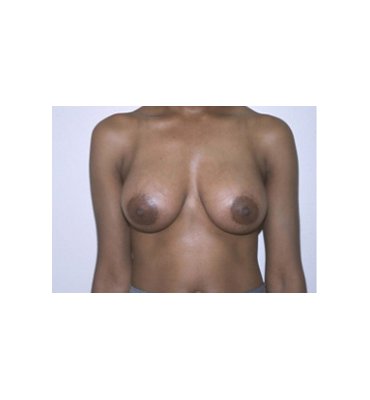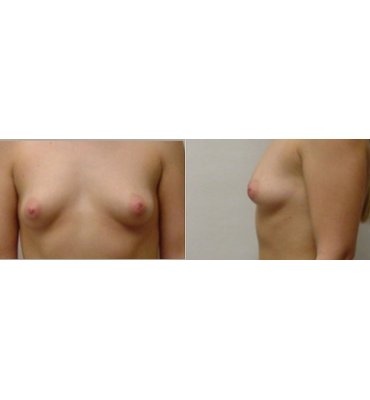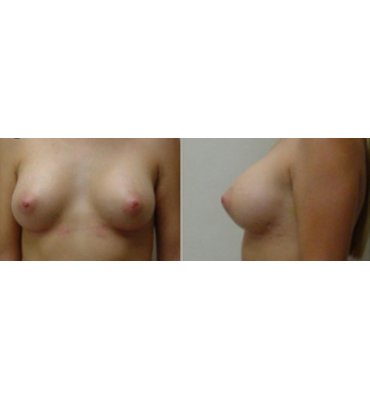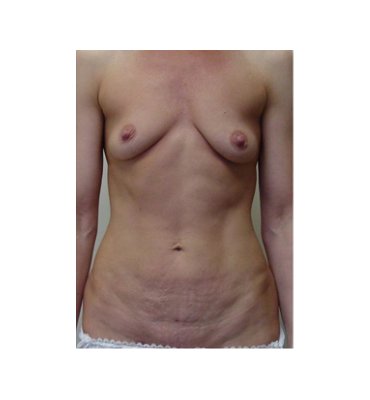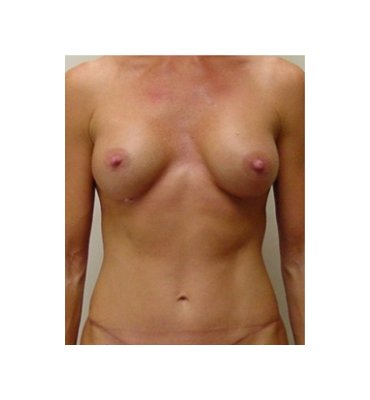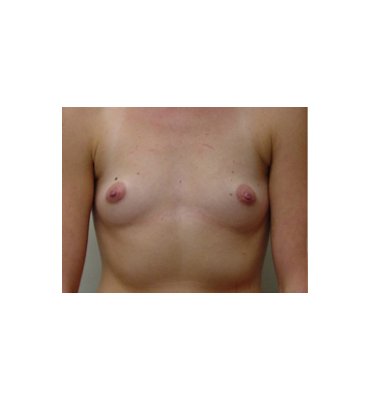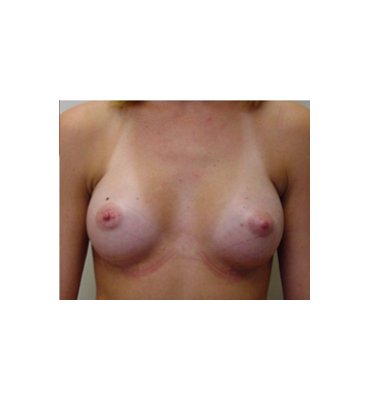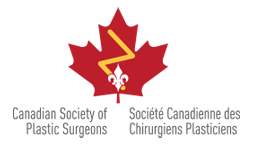- Home
- Breast Surgery Procedures
- Cosmetic Breast Surgery
- Breast Augmentation and Implant Surgery in Toronto
Breast Augmentation and Implant Surgery in Toronto
What is Breast Augmentation?
Breast augmentation is surgery in which a silicone implant is placed within the breast area to make the breast appear larger. Breast augmentation can also have beneficial effects on breast shape and position, and only requires an inconspicuous scar. It can be combined with a breast lift when significant changes in breast and areola shape are necessary.
At our cosmetic clinic in Toronto, our surgeon Dr. Michael Kreidstein has over 2 decades of experience offering cosmetic and reconstructive plastic surgery. If you need breast implants or breast augmentation in Toronto, call us or fill out a form on this page to get in touch.
Who is a good candidate for Breast Augmentation?
Anyone in Toronto seeking the cosmetic benefits of breast augmentation can be considered for this surgery, but there are some relative contraindications to surgery. If significant changes in your breast appearance are anticipated (e.g. through weight-change or pregnancy), surgery should be delayed until conditions are stable so that the cosmetic benefits of your surgery are not compromised. Breast augmentation is most productive for women years before planned pregnancy once child-bearing is complete. Cancer surveillance, especially any anticipated need for breast biopsy, must be factored into the decision process if family history or genetic testing suggests you may be at risk. Chronic illnesses should be optimized, and periods of high-stress should be avoided before any elective surgery. Recurrent infections (e.g. dental infections) must be overcome, as circulating bacteria can infect a breast implant.
Consultation Essentials for Breast Augmentation in Toronto
If you are considering breast augmentation or breast implants in Toronto, you should understand some unique aspects of this procedure so you can properly share in the decision-making process.
- Breast implants do last forever in some patients, but you must accept the likelihood that further breast augmentation surgery will eventually be necessary. This is more likely with saline-filled implants that deflate when they rupture, and with large implants (D size or larger) that will put a bigger strain on your tissues as you age.
- “Capsule”, the fibrous wall our bodies form around any foreign body, is a natural consequence of breast implant surgery. Problems can arise when it is too flimsy, allowing the implants to move around too much, or too hard causing deformity and pain. Be sure to discuss this issue at your consultation.
- Size matters, as larger implants do cause more strain on tissues and are more likely to necessitate future surgery. It is helpful to bring a photo to your consultation that demonstrates what size you would hope to be after surgery.
- Saline implants allow for smaller incisions, but feel ‘fake’ (compared to silicone gel implants) in patients who are very thin or if implant is placed over muscle. Don’t choose a saline implant to avoid silicone, as the shell of a saline implant is made of the same silicone material as gel implants. A saline implant will fully (and dramatically) deflate if a hole develops in the implant. Textured implants are generally avoided in cosmetic cases to reduce the risk of ALCL, a lymphoproliferative disorder that can behave like cancer if not treated.
Alternatives to Breast Augmentation
Fat grafting is an attractive option if you have good ‘donor sites’ with excess fat, and would be satisfied with a one-cup size augmentation. Larger augmentations are possible, but repeat fat graft procedures would be necessary. The option of breast lift must be considered if you are seeking a smaller or higher positioned areola, or tightening of the skin envelope.
Costs
Fees for Breast Augmentation or breast implants at our Toronto Cosmetic Plastic Surgery office (including facility and anesthetist) range from $8-10,000, depending on the type of implant chosen and the extent of surgery that is necessary.
Preparation for surgery
We provide thorough written instructions on preparation, and will review these with you well before surgery. We provide a bra or compression garment for your use after surgery. This is a day surgery procedure performed under general anesthetic. If you don’t live near our clinic in Toronto, you will need someone to help you get home. will need someone to help you get home,
The Operation

Implants may be placed partially under muscle. This helps to hide the rippled texture of even firm gel implants in patients who are very slim. Implants place over muscle are considered when there is an adequate (at least 1 cm thick) layer of padding under the skin to camouflage the implant, or if the patient is a high-demand athlete for whom muscle distortion will be a problem (e.g. body builders).

Short incisions are made through the skin to introduce the implant through the areola edge, axilla (armpit) or the fold under the breast.
Variations on Breast Augmentation
Breast asymmetry in which one breast is significantly smaller than the other is a special challenge in which we have great expertise. Tuberous breast deformity can also be improved greatly with breast augmentation combined with special maneuvers to allow the lower pole of the breast to expand.
Revision of Breast Augmentation
Common problems we are referred include capsular contracture, or if inadequate capsule is formed, rotating or shifting implants. Bottoming out, double-bubble, and symmastia are some of the problems we have been asked to treat. We do offer enbloc capsulectomy (with and without breast lift), and augmentation breast lift surgery.
Safety and Risks of Breast Implant Surgery
Immediate risks from breast implant surgery are very unusual. In the long term, implant deflation, hard capsule formation, or breast changes arising from weight-changes or pregnancy may require revision surgery. Breast Implant Illness is considered in those rare cases in which people suffer medical symptoms that defy other explanation, and implant removal may be considered as a last resort. Anaplastic Large Cell Lymphoma (ALCL) has become a concern in patients with textured implants who develop progressive breast enlargement from fluid accumulation (estimated risk is 1/3000 patients with textured implants).
Recovery process
Breast augmentation allows for an almost immediate return to daily activities, and light exercise can be resumed within two weeks. Chest exercise should be delayed for 6 weeks.
Results
Cosmetic results are evident immediately, although relatively large implants may cause skin tension that takes 6 weeks to relax. Axillary augmentation often results in high-positioned implants that require massage to achieve optimal position.
Breast Augmentation & Implants from Toronto’s Top Cosmetic Clinic
We deliver superb results in a safe and supportive private surgical facility. Come in for a consultation at our Toronto office, and you will leave wiser, and perhaps scheduled for a beautiful transformation.
Breast Augmentation Photo Gallery
Faqs About Breast Implants
Will breast implants sag after pregnancy?
Any temporary gain in weight will put breast skin on stretch, and once the weight is lost there may be too much skin and subsequent breast sagging. Breast augmentation is best done when your weight is stable and any plan for pregnancy is years off.
Will breast implants help with sagging?
Breast implants can fill the breast envelope and allow breasts to look fuller, but are not designed to improve sagging. Textured implants were somewhat effective at holding the breast up on the chest wall, but these implants are not currently available for use. Smooth implants may worsen sagging through an ‘orange in sock’ effect.
Will breast implants soften over time?
Breast implants themselves don’t change in density or hardness. Early (first three months) after augmentation, the skin and muscle draped over a large implant may appear tight and feel hard. Once these tissues stretch-out there will be softening of the breast. A small percentage of patients may subsequently experience hardening due to ‘capsular contracture’. Capsular contracture is the accumulation of hard scar tissue, tightly wrapped around the implant.
Will breast implants last forever?
The silicone shell that covers an implant has an approximately 1% risk of leaking each year. A 10-year warranty for replacement covers most breast implants for leakage. If a saline-filled implant were to deflate, the breast would shrink and the need for replacement would be obvious. Gel implants require imaging (ultrasound or MRI) to detect leakage. Current guidelines recommend imaging 5 years after surgery, but even if a leak is suspected there is no absolute requirement to have the implant replaced.
Can you get breast implants after being pregnant?
It is best to get breast implants after you are done with pregnancies. A 6-month period after lactation (breast feeding) is recommended because lactating breasts are temporarily enlarged, ducts are active and may harbour excessive bacteria, and blood supply is enhanced making a post-operative bleed more likely.
How do breast implants rupture?
Breast implants do not lie completely flat in the body, and folding at creases will eventually cause the shell to develop a hole that allows saline to escape. Cohesive gel implants contain silicone that does not tend to spread widely, and stays within the fibrous capsule surrounding the implant. A gel implant rupture will require ultrasound or MRI for detection.
What breast implants are safe?
It is safest to live with small breasts (or no breast if following mastectomy). If you can accept tiny risks of dissatisfaction (about 95% of patients are happy with their decision to get implants), several types of implants are approved for use by the FDA. Saline-filled implants, round smooth silicone gel implants, and structured silicone implants should be considered safest, and textured implants should be avoided unless there is a significant advantage to their use in your case.
Breast Implant Pre & Post op Care
When should breast implants be replaced?
A saline implant is obvious when it requires replacement, as any leak will result in the breast losing volume. Silicone gel implants (the only silicone-filled implants available since 1999) are not obvious when the shell tears, as the silicone gel remains within the fibrous pocket (capsule) made by your body and volume is preserved. About 20 % of gel implants are found to have a hole at 5 years, MRI over-diagnoses implant holes about 20% of the time, and the presence of a torn implant causes no medical problems in the vast majority of patients. Implant manufacturers will pay for a replacement implant if tear is found (or suspected on MRI). Our advice is to be grateful if your implants are causing you no problems, and leave them alone. If you have hardening, swelling, or mass appearing in an implanted breast, or an illness that defies all explanation, see your plastic surgeon to discuss whether implant replacement is a good idea for you.
Where do breast implants go?
In patients with enough padding (2 cm pinch is general rule), it is preferable to put the implant over muscle. Implants put under muscle are actually only under muscle across the top of the implant, which hides the upper edge of the implant in thin people, but has the negatives of dynamic deformity (breasts get deformed when you contract your pectoral muscle) and the implants tend to sit a little too lateral (not close enough to the center) in some patients.
Which breast implants cause cancer?
Textured implants have been associated with a very rare cancer (anaplastic large cell lymphoma), with ALCL occurring in about 1/3000 patients with textured implants. Whether the implant is causing the cancer is not clear- perhaps the more aggressive healing process around a textured implant is the cause. Whatever the case, use of a textured implant should be considered only if use of a smooth implant will not be successful.
Which breast implants are more expensive?
The structured saline-filled implants are most expensive, followed by silicone gel and then saline-filled implants. The differences in cost are not significant, and the additional effort involved in handling a saline implant (smaller incisions, testing and filling the implant) will generally result in total surgery fees comparable to the use of silicone gel implants. The choice of implant should not be based on the relative cost of the implant ($500-$1000 each).
Why do breast implants need to be replaced?
If you experience swelling or a mass or painful hardening in an implanted breast, you should be seen by a plastic surgeon to discuss management of your implant. If an MRI or ultrasound suggests a torn implant, this presents an opportunity for implant replacement in which the manufacturers warranty would cover the implant cost, even if you are just replacing for cosmetic purposes. A torn cohesive gel implant that is not causing any symptoms does not require replacement. Textured implants have caused some concern as 1/3000 patients may develop a cancer termed ALCL, but if this disease is treated (implant removal and capsulectomy) when early signs (swelling or breast mass) appear, it is curable. If you do not have swelling or mass formation, there is no need to have a textured implant removed, and most women have had excellent experience with these implants.
Why do breast implants hurt?
The miracle of surgery is that tissues (including nerves) can be cut/burned/stretched, and that generally any pain experienced after the surgery is gone within a few weeks. Breast implants that develop capsular contracture (a hard wall of fibrous tissue and sometimes calcium) can cause pain because the presence of this hard mass puts pressure on the surrounding tissues. By analogy, a stone in your shoe is not the source of the pain, but when it pushes on the surrounding tissues it causes pain. Another cause of pain can be due to damage to a major sensory nerve to the breast. If you have an areola/nipple that stays numb even months after surgery, this suggests your primary nerve to the breast was damaged and it may be a source of pain if/when it ‘wakes up’.
Why do breast implants have to be replaced?
A saline implant is obvious when it requires replacement, as any leak will result in the breast losing volume. Silicone gel implants (the only silicone-filled implants available since 1999) are not obvious when the shell tears, as the silicone gel remains within the fibrous pocket (capsule) made by your body and volume is preserved. About 20 % of gel implants are found to have a hole at 5 years, MRI over-diagnoses implant holes about 20% of the time (false-positive), and the presence of a torn implant causes no medical problems in the vast majority of patients. Implant manufacturers will pay for a replacement implant if a tear is found (or suspected on MRI). Our advice is to be grateful if your implants are causing you no problems, and leave them alone. If you have hardening, swelling, or mass appearing in an implanted breast, or an illness that defies all explanation, see your plastic surgeon to discuss whether implant replacement is a good idea for you.

